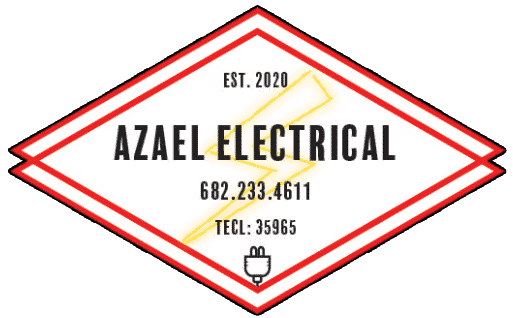Helping kids learn about electricity can be both fun and educational. With the right guidance, children can explore the basics of electricity safely. Hands-on projects not only make learning more engaging but also help kids understand complex concepts in a simple and clear way.
Starting with basic principles, kids can grasp how electricity works without getting overwhelmed. Simple projects like creating a basic circuit with a battery and a light bulb can spark their interest. These activities provide a great way for kids to see electricity in action. Safety is always a priority, so it’s important to set clear rules from the beginning.
Using everyday items for experiments makes these activities accessible and affordable. For instance, creating static electricity with a balloon can be done with things you already have at home. These experiments are not just fun but also explain the science behind electricity in kid-friendly terms.
In addition to being educational, these projects encourage curiosity and critical thinking. Kids get excited to learn when they can play and experiment in a safe environment. By guiding them through these activities, we can nurture their interest in science and help them understand the world around them.
Understanding the Basics of Electricity
Electricity is the flow of tiny particles called electrons. These particles move through a material, creating electrical energy. We use this energy to power lights, gadgets, and many other things in our homes. Explaining these basics to kids helps them understand what electricity is and how it works.
When working on electrical projects, safety is crucial. Here are some safety rules to follow:
- Always work with an adult. Kids should never handle electricity by themselves.
- Use low-voltage batteries, like AA or AAA, to avoid any risk of electric shock.
- Never touch electrical outlets or plug in anything without asking an adult first.
- Keep projects away from water. Water and electricity do not mix and can cause serious harm.
- Make sure hands are dry before starting projects to avoid any accidents.
By following these rules, kids can learn about electricity while staying safe. Teaching these guidelines from the start ensures that kids understand the importance of safety.
Fun and Safe Electrical Projects
There are many fun and safe electrical projects that kids can try at home. These projects are easy to set up and provide a great learning experience. Here are a few ideas:
Simple Circuit with a Battery and Light Bulb:
– Materials: AA battery, small light bulb, electrical tape, two pieces of wire.
– Instructions:
- Attach one end of a wire to the positive end of the battery using electrical tape.
- Attach the other end of the same wire to the bottom of the light bulb.
- Take the second wire and attach one end to the side of the light bulb.
- Attach the other end of this wire to the negative end of the battery.
- The light bulb should light up, completing the circuit.
Paper Clip Motor:
– Materials: AA battery, copper wire, small magnet, paper clips.
– Instructions:
- Coil the copper wire around a small object to create a loop. Leave two straight ends of about 2 inches each.
- Place the coil horizontally over the battery.
- Attach the paper clips to each end of the battery to hold the wire in place.
- Place the small magnet underneath the coil. The coil should start spinning, creating a simple motor.
These projects help kids see how electricity works in a hands-on way. Following the steps correctly ensures that the projects are safe and fun.
Using Everyday Items for Electrical Experiments
Conducting electrical experiments with everyday household items can be both fun and informative. It shows kids how electricity works using items they are already familiar with. Here are a couple of simple experiments and the science behind them:
Creating Static Electricity with a Balloon:
– Materials: A balloon, a piece of wool or a sweater.
– Instructions:
- Blow up the balloon and tie it.
- Rub the balloon on the wool or sweater for about 30 seconds.
- Now, place the balloon close to small pieces of paper or your hair.
- Watch as the paper pieces or hair get attracted to the balloon.
– Explanation: Rubbing the balloon creates static electricity. Electrons move from the wool to the balloon, giving it a negative charge. This causes it to attract light objects.
Lemon Battery:
– Materials: A lemon, a copper coin, a small galvanized nail, and wires.
– Instructions:
- Roll the lemon to release the juice inside.
- Insert the copper coin into one side of the lemon.
- Insert the galvanized nail on the opposite side.
- Use wires to connect the coin and nail to a small LED light.
- Watch the LED light up.
– Explanation: The acid in the lemon acts as an electrolyte. It allows electrons to flow between the copper and the nail, creating a small electrical current.
These experiments are a great way to show kids the basics of electrical theory in a hands-on way. They will be amazed at how simple household items can create electricity.
Learning Through Play
Learning about electricity through hands-on projects offers many benefits for kids. When children engage in these activities, they learn by doing. This method helps them understand complex concepts more easily.
Hands-on projects encourage curiosity. When kids see how things work, they start to ask questions and explore more. This curiosity drives their desire to learn and discover new things. It turns learning into a fun adventure.
Critical thinking skills also develop through these projects. Kids must figure out how to solve problems and make things work. This process teaches them to think logically and resourcefully. It also helps them gain confidence in their problem-solving abilities.
Encouraging kids to explore electrical projects at a young age can spark an interest in science and technology. It provides a foundation for future learning and can inspire a lifelong love for these subjects. By making learning fun and interactive, we can help kids develop important skills while having a great time.
Conclusion
Helping kids explore the world of electricity through safe and fun projects is a wonderful way to nurture their curiosity and teach them valuable skills. By starting with simple explanations and basic safety rules, we create a solid foundation for understanding. Engaging projects and experiments using everyday items make learning exciting and accessible.
These hands-on activities encourage kids to ask questions, solve problems, and think critically. They also provide a great opportunity for family bonding and shared learning experiences. As kids see their projects come to life, their sense of accomplishment and interest in science grows.
If you’re looking to inspire your kids and make learning about electricity fun, try out these projects at home. And if you ever need a professional electrician, don’t hesitate to contact Azael Electrical for expert help. We’re here to support all your electrical needs and projects in the DFW area.

